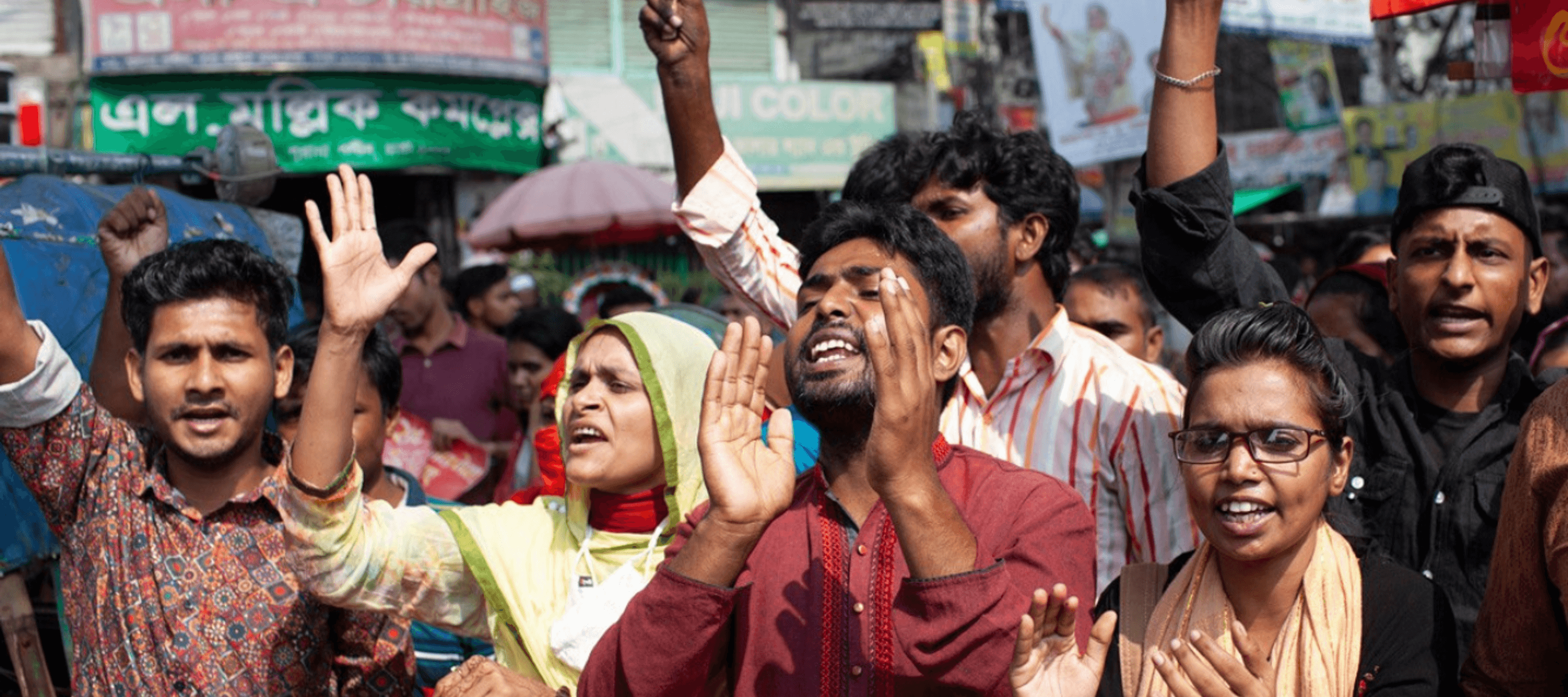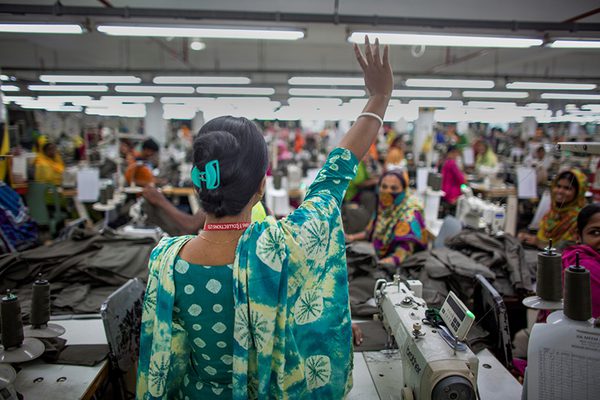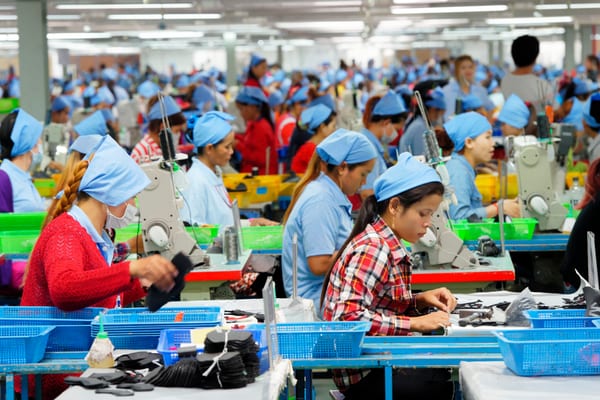Achieving a living wage for garment workers needs price-squeezing to stop
6 December 2023

Grossly inadequate wages, workers protesting for increased pay, and harsh retaliation by employers are not new in the garment industry in Bangladesh, the world's second biggest producer of fast fashion.
In recent weeks, negotiations over a new minimum wage for workers have sparked particularly violent demonstrations throughout Dhaka. The unrest has continued for some time now and as the country heads for elections in a few weeks, further violent unrest is likely. The protest escalated when the government announced a minimum wage increase for workers to 12,500 taka per month ($113) from 8,300 taka per month ($75). This figure is far below the 23,000 taka a month ($208) wage that workers, unions, and international labor organisations have demanded. This figure is still significantly below living wage estimates (wages required to maintain a basic standard of living), which have been calculated by The Bangladesh Institute of Labour Studies. That figure stands at 33,368 taka per month ($302); the Asia Floor Wage Alliance asks for more, at 51,000 taka per month ($462).
The garment industry has been a key driver of Bangladesh’s economic growth, and is largely responsible for the country reaching ‘lower-middle income status’ in 2015. It is now on track to graduate from the UN's Least Developed Countries (LDC) list in 2026.
But to continue attracting investment by global brands and maintain its advantage in ready-made garment production, the government has historically suppressed wage growth. So while the country is achieving macro economic success, workers’ incomes have not kept pace with rising inflation.
"What options do our workers have besides demanding a better wage for their survival? Currently, the price of a kilo of onions is higher than (that of) guavas. The prices of all other essential items--rice, lentils, flour and eggs--has increased abnormally over the past five years—some of them by 100 percent while others by 120 percent. At present, workers cannot even afford to buy eggs—the cheapest source of protein—for their families…Currently, it [the Ready-Made Garment sector] brings in around 84 percent of the country's total foreign exchange earnings. Do the workers, who are the driving force behind this success, deserve such miserable lives?"
- Taslima Akhter, president of the Bangladesh Garment Sramik Samhati and a photographer
Workers need dignified wages, not relief packages
In a chapter in a book on Covid 19 and Human Rights I co-authored with Salil Tripathi and Harpreet Kaur, we argue that the impact of the billions of dollars’ worth of order cancellations by apparel brands during the crisis made garment workers even more vulnerable .
Because garment worker wages were so low before the pandemic, when we surveyed more than 1,000 garment workers in Bangladesh, and asked them how they coped during the pandemic period, 60% of workers said they could not save or used their savings to pay for food, and 92% said they were forced to reduce other expenses (related to food, healthcare and their children’s education).
When we spoke to Kalpona Akter, executive director of the Bangladesh Center for Workers Solidarity during the pandemic, she reiterated the importance of adequate wages: “When people talk about relief, it irritates me. We don’t want relief programmes, we don’t need any training, we just want dignified wages. We just want the laws to be implemented and protect us. Brands can easily do that by working with our governments and adding more money with every garment they are sourcing. It is that easy. It is not complicated.”
How fashion brands can step in
Although most fast fashion brands sourcing from Bangladesh claim to support a living wage, they are only required to pay workers the legal monthly minimum wage. The Head of Sustainability at a major retailer told us it is not the brand’s job to define the wage rate in a country. “All we can do is express support for a living wage through our role in multi-stakeholder initiatives like ACT. The way for companies to address this is through its purchasing practices and offering fair prices, as well as supporting freedom of association,” they said.
Unfortunately, many fashion brands do not offer fair prices to their suppliers. It means suppliers must continue to reduce costs to meet buyer demands, and clothing brands sell merchandise in a competitive environment, while ensuring their own profits. It means very little of the price you pay for a T-shirt or a pair of jeans actually ends up improving the lives of workers who made the item in a factory.
Squeezed prices post-pandemic are getting worse
My current research with NYU Stern Center for Business and Human Rights finds that much of the behaviour of apparel brands during the pandemic, such as asking suppliers for significant discounts or postponing payment for goods already produced in order to preserve and protect cash flows, have largely continued. Many Bangladeshi manufacturers I spoke to earlier this year said the continual squeeze on prices has actually become worse since the pandemic. This behaviour is not isolated to just Bangladesh, but suppliers worldwide are facing similar trends.
" Buyers still don’t want to increase the cut and make (C&M) charge; they put pressure on prices, give us a target price which is even lower, otherwise they say they will go elsewhere… Factories are desperate, trying to grab orders as much as possible, trying to survive…Some factories quote even a lower price than target…Buyers are saying that we have to pay a living wage—they need to put their money where their mouth is…” said one manufacturer in Bangladesh.
" They [the buyers] have a lot of demands, but [they are] not ready to pay for these…If they don’t pay us, we have no other source of income…Buyers want transparency [from us], but never give us open costing,” said another.
Arguably, manufacturers cannot pay workers an adequate wage if they don’t receive reasonable prices from their buyers. So the price of the cheap T-shirt bought on the high street is borne by the underpaid garment worker in Bangladesh.
Hope in regulations
Perhaps new European laws, through their emphasis on conducting and reporting on their human rights due diligence, will lead to pressure on brands to pay workers a living wage throughout their supply chain.
If global brands are truly committed to a living wage, they need to stop driving down prices and start using their leverage with manufacturers in sourcing countries to ensure workers are being paid fairly, that their right to organise is upheld, and that they do not face violent retaliation when they speak out. H&M is the first global brand to increase unit prices for garment manufacturers to support the recent wage increase. Other brands should follow suit.
Until brands take a shared responsibility approach to making improvements in their supply chains, we will continue to witness worker unrest and violence in Bangladesh and elsewhere. It is workers at the bottom of these supply chains whose lives hang in a balance when their basic needs are not met for themselves and their families. The time to wake up is now.
Image credit: Taslima Akhter
Guest commentaries reflect the views of the author(s). See more.




